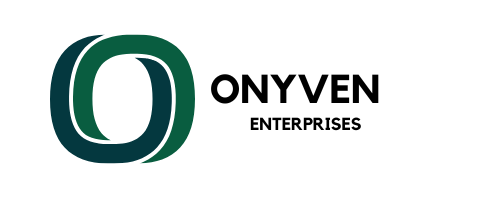Last week, I attended Intel’s Vision 2025 conference at the Virgin Hotel in Las Vegas. While the venue posed some challenges, the event delivered a strong message: Intel is back—with a renewed vision, sharper focus, and a leadership team ready to drive real transformation.
Intel’s latest keynote marked a turning point, led by newly appointed CEO Lip-Bu Tan, whose strategic approach and deep industry experience signal a bold new era for the semiconductor giant.
A Company Reinvigorated: Intel’s New Leadership
Lip-Bu Tan’s appointment has injected new energy and clarity into Intel’s executive ranks. Unlike many new CEOs, Tan requires no lengthy adjustment period—his previous role on Intel’s board gave him a thorough understanding of the company’s structure, challenges, and untapped potential. Combined with a proven track record in the tech space, Tan is exceptionally equipped to lead Intel through this next chapter.
Vision 2025: A Roadmap for Innovation
The Intel Vision 2025 keynote was not just a presentation—it was a manifesto for innovation. Tan laid out a comprehensive plan focused on reclaiming Intel’s technological leadership and delivering next-generation computing solutions across AI, chip manufacturing, and ecosystem partnerships.
Key Pillars of Intel’s Vision 2025:
- Artificial Intelligence (AI) Everywhere
- Chiplet-Based Architecture
- Manufacturing Reinvention
- Strategic Partnerships
Intel’s AI Everywhere Strategy
At the heart of Intel Vision 2025 is a sweeping AI strategy. Tan emphasized that AI is no longer an add-on—it’s the foundation of future computing. Intel’s goal: deliver a full-stack AI platform, from silicon to software, that empowers developers and enterprises alike.
Intel’s AI Stack Includes:
- AI-optimized hardware: CPUs, GPUs, and AI accelerators like Gaudi 3
- Open software platforms: Tools, libraries, and contributions to the open-source community
- Ecosystem collaboration: Partnerships with software leaders, cloud providers, and system integrators
Noteworthy updates include the upcoming Falcon Shores HPC accelerator and AI-enabled Xeon processors, both of which represent Intel’s commitment to AI-driven performance and scalability.
Embracing the Chiplet Revolution
Intel is making a decisive shift from monolithic chip design to modular chiplet architecture. With technologies like Universal Chiplet Interconnect Express (UCIe), Intel is poised to lead this transformation by enabling faster development, more flexibility, and better cost-efficiency.
Benefits of Chiplet Design:
- Faster innovation cycles
- Customized solutions for varied workloads
- Improved yields and reduced development costs
Intel is not only innovating internally but also leading industry-wide adoption through its work with the UCIe consortium.
Manufacturing and Foundry Services: Intel’s Strategic Backbone
Intel is doubling down on manufacturing excellence. Under the IDM 2.0 strategy, the company integrates internal manufacturing, external foundries, and the ambitious Intel Foundry Services (IFS) model to secure supply chains and drive long-term growth.
Intel’s Manufacturing Strategy Highlights:
- Expansion of advanced fabs
- Integration of new process nodes
- Goal to become the foundry of choice in the AI era
IFS will enable Intel to serve external clients while also powering internal innovation—paving the way for Intel to challenge foundry leaders globally.
Strategic Partnerships: A New Collaborative Approach
Tan emphasized that the complexity of today’s computing challenges demands industry-wide collaboration. Intel is forming strategic alliances with:
- Software providers like Microsoft, Google, VMware
- Cloud providers including AWS, Azure, Google Cloud
- OEMs and system integrators such as Dell, HP, and Lenovo
These collaborations are critical to delivering integrated, scalable, and optimized computing solutions across sectors.
A Resilient Workforce Driving Transformation
Despite past disruptions—including layoffs and structural missteps—Intel’s employees remain its greatest asset. Their dedication and resilience have sustained the company, and under new leadership, they’re positioned to thrive as Intel transforms.
Intel Vision 2025: Key Takeaways
- AI Everywhere: Intel is delivering AI across all levels of hardware and software infrastructure.
- Chiplet Innovation: A game-changer in design and scalability, enabling rapid innovation.
- Manufacturing Leadership: With IDM 2.0 and IFS, Intel secures control of its production future.
- Strategic Partnerships: Collaboration is the key to industry-wide impact.
- CEO Leadership: Lip-Bu Tan brings both experience and vision to Intel’s next phase.
Wrapping Up: Intel’s Next Chapter Begins
The Intel Vision 2025 keynote was more than a product showcase—it was a declaration of a company on the rise. With Lip-Bu Tan at the helm, Intel is not just evolving—it’s leading. The strategic roadmap outlined at the conference offers a clear path forward, driven by AI, innovation, collaboration, and manufacturing might.
As the tech world watches closely, one thing is clear: Intel is actively shaping the future of computing.
Product of the Week: Linux and Its Surprising Evolution
To end on a high note, I want to spotlight Linux—a platform I once dismissed, but now deeply respect. The Linux keynote on day two reminded me how far the open-source OS has come. Thanks to the relentless work of The Linux Foundation, Linux has become a cornerstone of modern computing. It’s powerful, stable, and indispensable in today’s cloud and AI environments. Intel is no longer just reacting to change—it’s driving it. With a new CEO, a strong AI and chiplet strategy, and a re-energized workforce, Intel Vision 2025 may very well mark the beginning of a true renaissance for the company


Add a Comment